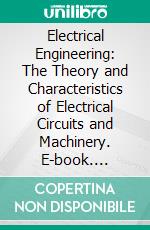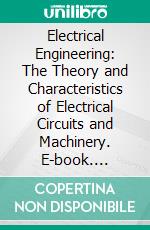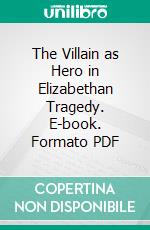Clarence V eBooks
eBooks di Clarence V
Electrical Engineering: The Theory and Characteristics of Electrical Circuits and Machinery. E-book. Formato PDF Clarence V. Christie - Forgotten Books, 2017 -
Page Unit of Electromotive Force. Force Exerted by a Magnetic Fleld on an Electric Circuit. Transformation of Mechanical Energy to Electrical Energy. Intensity of Magnetic Fields Produced by Electric Currents. Magnetomotive Force of a Solenoid. Examples. Energy Stored in the Magnetic Field. Stress in the Magnetic Field. Permeability Curves. Hysteresis.
Electrical Engineering: The Theory and Characteristics of Electrical Circuits and Machinery. E-book. Formato PDF Clarence Victor Christie - Forgotten Books, 2017 -
The second edition contains all the material in the original text but much of it has been rewritten and a great deal of new material added. The more important additions include sections on complex alternating waves and wave analysis, on polyphase alternating current circuits, on the construction of the characteristic curves of direct-current generators and motors, on the design of direct and alternating-current machinery, on the Blondel diagram for the synchronous motor, on the symbolic method of analysis of the induction motor, on alternating-current commutator motors, and finally a chapter on electrical measuring instruments. The chapter on direct-current machinery has been entirely rewritten and much enlarged, and to make it complete a short chapter outlining the design of a direct-current generator has been added. This chapter and the other sections dealing with design are not intended to cover the work required in a course on design but only to give the student some idea of the formulae and constants involved.
The Villain as Hero in Elizabethan Tragedy. E-book. Formato PDF Clarence Valentine Boyer - Forgotten Books, 2017 -
Elizabethan drama is a term rather loosely used to cover the plays produced between the accession of Elizabeth, in 1558, and the restoration of Charles II in 1660. The plays of this period are, as every student knows, of very mixed type and unequal value, including as they do the sacred drama of national origin, the Latin imitations of Plautus and Seneca, the masterpieces of Shakespeare, and the decadent drama immediately preceding the closing of the theatres. It was towards the end of the sixteenth century that the Moral plays, performed chie?y for the edification and amusement of the common people, and the stiff imitations of classical plays, performed chie?y at court, began to give way before a new movement drawing nourishment from both, but distinctly different from either the Romantic Drama, the drama of passion, which was the crown and ?ower of Elizabethan dramatic art, and of which Shakespeare is the great exemplar.


